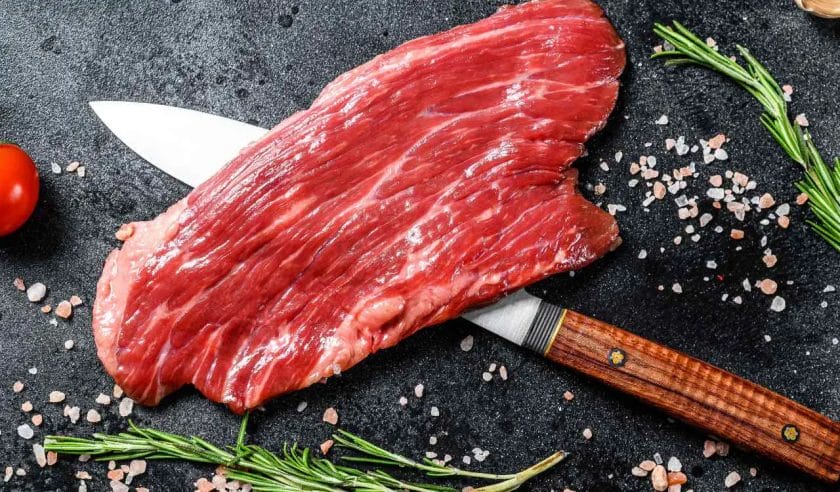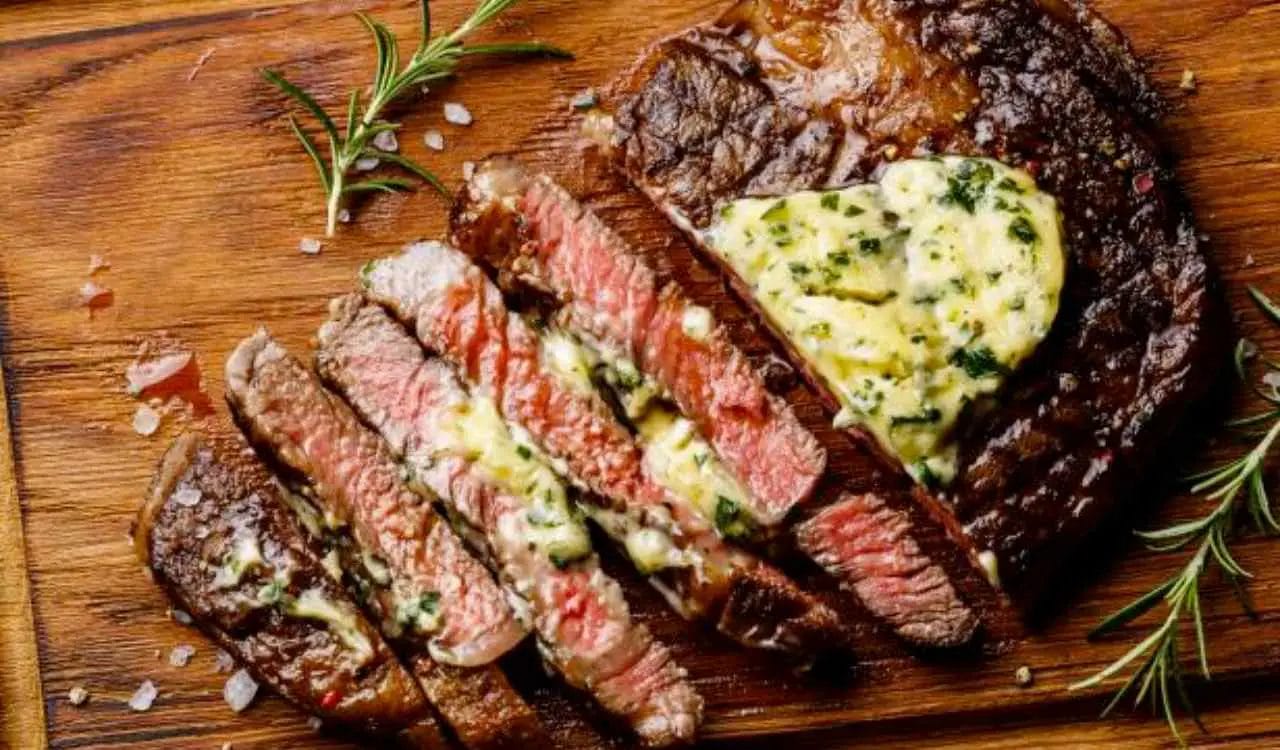Welcome, fellow food enthusiasts, to an in-depth exploration of a culinary gem that has been delighting palates for centuries – the Spencer steak. This comprehensive guide will take you on a journey through the fascinating world of this unique steak cut.
We’ll delve into its origins, characteristics, preparation techniques, cooking methods, and even some mouth-watering recipes. So, fasten your apron strings and get ready for a flavorful adventure!
What is Spencer Steak? An In-depth Look
At its core, Spencer steak is a boneless rib-eye steak, a term predominantly used on the West Coast. This cut is known by several other names, including Delmonico, beauty steak, market steak, and Scotch fillet, depending on the region.
The Spencer steak is cut from a prime rib, often with large areas of fat removed, resulting in a leaner version of some rib-eye steaks.
But what sets Spencer steak apart from other cuts? It’s all about the location. The Spencer steak is cut from the center of the rib section, which is one of the least exercised areas of the cow. This results in a cut that’s incredibly tender and packed full of flavor.
Origins and Popularity of Spencer Steak
The Spencer steak has been a favorite among steak lovers for hundreds of years. Its popularity stems from its rich flavor, tender texture, and versatility in cooking.

Despite its high-quality attributes, it’s often more affordable than other premium steak cuts, making it a popular choice for many households.
Taste and Texture of Spencer Steak
The Spencer steak is renowned for its rich, beefy flavor and smooth texture. It’s one of the richest cuts available, offering a distinctive beef taste that’s a real treat for the palate. Despite its robust flavor, the meat is tender and can be easily cut if prepared correctly.
Preparing Spencer Steak: A Step-by-Step Guide
Proper preparation is key to bringing out the best in your Spencer steak. Here’s a step-by-step guide to preparing your steak for cooking:
- Storage: After purchasing, it’s recommended to use the steak within 3-5 days for optimal freshness. Store it in the refrigerator to maintain its quality.
- Temperature: Before cooking, let the steak sit at room temperature for about 20 minutes. This helps the steak cook more evenly, resulting in a better texture.
- Trimming: When it comes to cutting, trim off some of the excessive fat, but be careful not to remove too much, as it contributes to the steak’s natural taste, juices, and flavors.
- Seasoning: Season the steak to your liking. A simple salt and pepper seasoning can enhance the natural flavors of the steak. For a more complex flavor profile, consider marinating the steak.
Cooking Spencer Steak: Techniques and Tips
There are two popular methods to cook a Spencer steak: direct heat (searing) and the reverse sear method. Both methods start with salting the steak 24 hours before cooking, which enhances the flavor.
For searing, preheat your oven or grill, then sear the steak on one side until it’s deeply brown. Flip and sear the other side, then finish cooking in the oven or over indirect heat on the grill.
The reverse sear method involves slow-cooking the steak first, then searing it for a perfectly even cook from top to bottom.
Recipes for Spencer Steak: From Simple to Gourmet
There are countless ways to enjoy Spencer steak, from simple salt and pepper seasoning to marinating it in a mixture of Italian dressing, A1 sauce, Worcesters**hire sauce, and lemon juice. The choice of side dishes is equally diverse, with options like roasted potatoes, green beans, roasted asparagus, and steak fries.
For a simple yet delicious recipe, try a classic Spencer steak with a garlic and herb butter. First, season your steak with salt and pepper, then sear it on both sides in a hot skillet. Once it’s cooked to your liking, add a dollop of homemade garlic and herb butter on top and let it melt into the steak. The result is a flavorful, juicy steak with a rich, buttery finish.
For a more gourmet option, consider a Spencer steak with a red wine reduction. After searing your steak, deglaze the pan with a good quality red wine, scraping up any browned bits from the bottom of the pan. Add some finely chopped shallots and a sprig of fresh thyme, then let it reduce until it’s thick and syrupy. Drizzle this over your cooked steak for a restaurant-quality dish at home.
FAQs
1. What is the difference between Spencer steak and rib-eye steak?
While Spencer steak and rib-eye steak are both cut from the rib section of a cow, there are some differences between the two.
Spencer steak is essentially a boneless rib-eye steak, often with large areas of fat removed, resulting in a leaner version of some rib-eye steaks.
On the other hand, rib-eye steak can be bone-in or boneless and is known for its rich marbling, which contributes to its flavor and tenderness.
2. How should I store my Spencer steak?
To maintain the quality of your Spencer steak, it’s recommended to store it in the refrigerator. If you’re not planning to cook it immediately, you can freeze it.
However, it’s best to use the steak within 3-5 days of purchasing for optimal freshness.
3. What’s the best way to season a Spencer steak?
Seasoning a Spencer steak can be as simple or as complex as you like. A basic seasoning of salt and pepper can enhance the natural flavors of the steak.
For a more complex flavor profile, consider marinating the steak in a mixture of your favorite herbs, spices, and sauces. Remember to season or marinate the steak 24 hours before cooking to allow the flavors to penetrate the meat.
4. Can I grill a Spencer steak?
Yes, you can grill a Spencer steak. In fact, grilling is one of the most popular methods of cooking this cut. The high heat of the grill helps to create a delicious crust on the outside of the steak, while keeping the inside juicy and tender. Remember to preheat your grill before cooking and let the steak rest for a few minutes after grilling to allow the juices to redistribute.
5. What are some good side dishes to serve with Spencer steak?
Spencer steak pairs well with a variety of side dishes. Classic options include mashed potatoes, green beans, and roasted asparagus.
For a lighter option, consider a fresh salad or steamed vegetables. If you’re feeling adventurous, try pairing your steak with a gourmet mac and cheese or a rich, creamy risotto.
6. What wine pairs well with Spencer steak?
A full-bodied red wine, like a Cabernet Sauvignon or a Malbec, can complement the beefy flavors of the Spencer steak. If you’re serving your steak with a creamy sauce, a Chardonnay can be a great match. Remember, the best wine pairing is the one you enjoy the most.
7. How do I know when my Spencer steak is done?
The best way to determine the doneness of your Spencer steak is by using a meat thermometer. For a medium-rare steak, aim for an internal temperature of 130-135°F.
For medium, aim for 135-145°F. Remember, the steak will continue to cook a bit after you remove it from the heat, so it’s best to take it off a few degrees before it reaches your desired temperature.
8. Can I use Spencer steak in my favorite steak recipe?
Absolutely! Spencer steak is a versatile cut that can be used in a variety of recipes. Whether you’re grilling, pan-searing, or broiling, Spencer steak can deliver a delicious result.
Just remember to adjust the cooking time and temperature as needed to ensure your steak is cooked to your liking.
Conclusion
Spencer steak is a delightful cut that offers a rich flavor and tender texture. Whether you’re a steak enthusiast or a home cook looking to try something new, Spencer steak is a cut worth exploring.
With its versatility in cooking and its affordability compared to other premium cuts, it’s a great addition to any kitchen. So why wait? Grab a Spencer steak on your next grocery run and embark on a delicious culinary adventure. Happy cooking!

